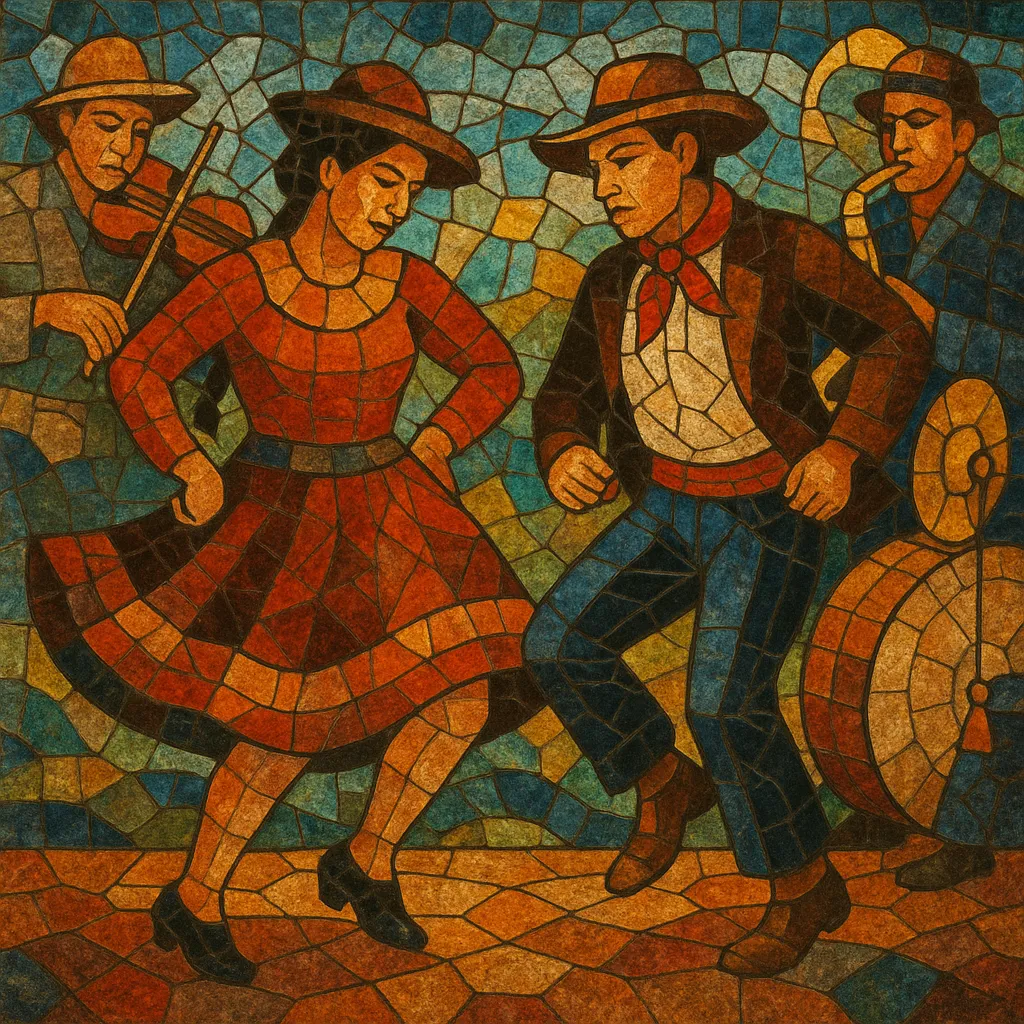Huaylarsh (also spelled Huaylash or Waylarsh) is a lively Andean dance-music style from Peru’s central highlands, especially the Mantaro Valley (Junín).
It is fast, syncopated, and celebratory, with a driving 2/4 (sometimes 4/4) pulse that supports energetic, stomping choreography associated with harvest festivities and courtship.
Modern huaylarsh is typically led by saxophones and other brass/woodwinds backed by bombo (bass drum), snare (redoblante), and cymbals, while older rural variants favored violin/harp ensembles. Melodies often draw on Andean pentatonic or hexatonic scales and move in parallel thirds, and vocals (when present) mix Spanish with Wanka Quechua. The result is a bright, communal sound designed for dancing and celebration.
Huaylarsh emerged in the Mantaro Valley of Peru (Junín) as a festive, communal dance associated with agricultural cycles—especially harvest celebrations. Its musical DNA blends indigenous Wanka traditions with European influences brought during and after the colonial period. Over time, local ensembles adapted European couple-dance rhythms such as polka and schottische to Andean aesthetics, giving rise to a distinct, fast 2/4 groove and stomping choreographies.
By the early 20th century, town and military-style brass bands in central Peru began formalizing the huaylarsh sound. The use of saxophones, clarinets, trumpets, and snare/bass drum patterns shaped the modern ensemble. Local fiestas and regional radio in cities like Huancayo helped spread standardized versions and fostered friendly competition between orchestras.
Postwar migration from the central highlands to Lima brought huaylarsh into urban venues. Ensembles modernized arrangements, emphasized saxophone leads, and incorporated sectional forms and showmanship. Recordings, radio, and folkloric festivals popularized both “huaylarsh costumbrista” (rural, traditional) and “huaylarsh moderno” (urban, orchestrated) styles, helping the genre become a national symbol of central Andean identity.
Today, huaylarsh thrives at regional festivals, competitions, and civic events. Orchestras experiment with brighter brass voicings, denser percussion, and pop-informed harmonies while maintaining the characteristic rhythmic drive and dance function. Choreography remains central: athletic footwork and group formations reflect its origins as a community celebration.


